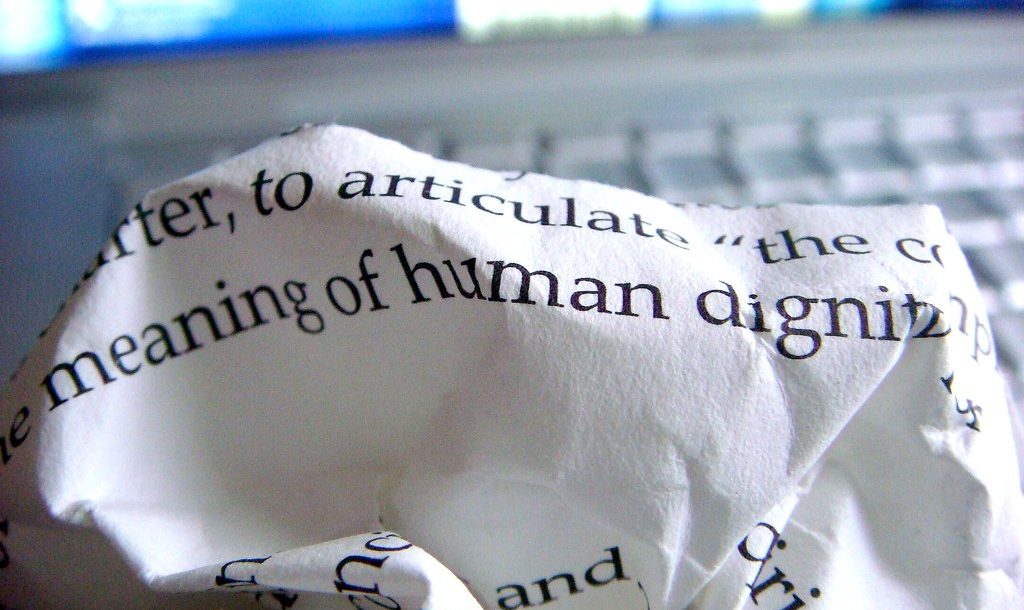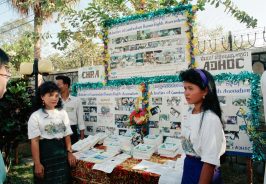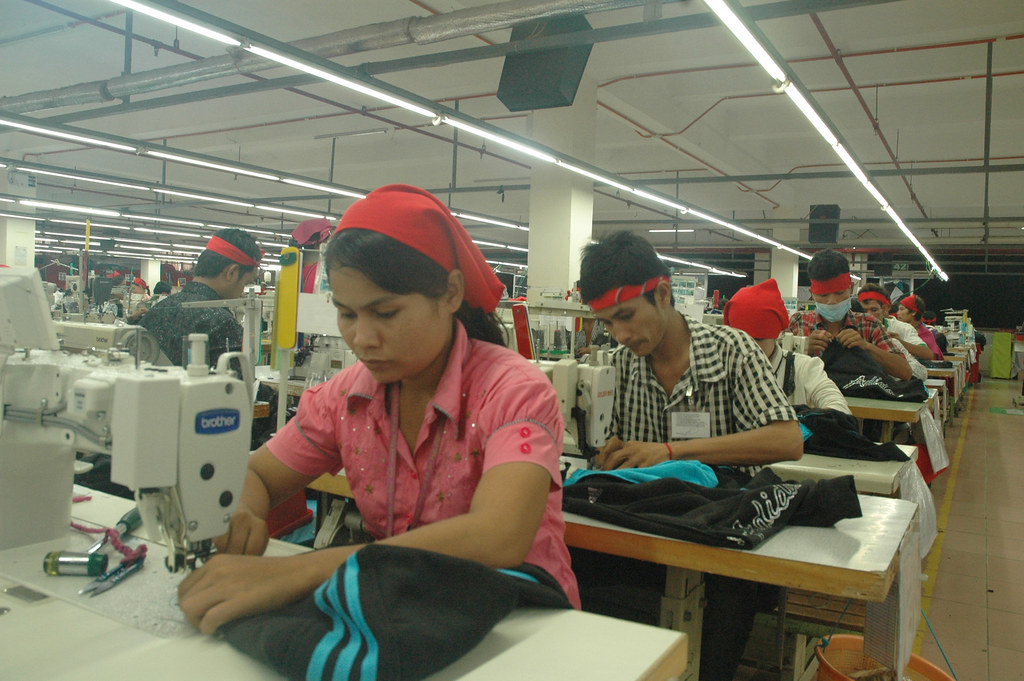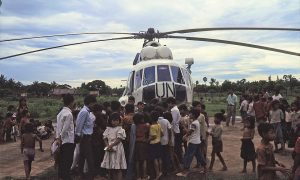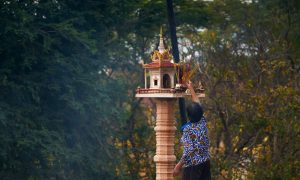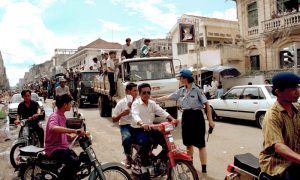On 13 August 2020 a group of national and international organisations called on the Royal Government of Cambodia to discard its controversial “Draft Law on Public Order”—a piece of legislation which has been loudly criticised for overly regulating public spaces and violating freedoms of expression, association, and assembly.
In their joint statement, the group of organisations called attention to the Draft Law’s asserted purpose to preserve, among other things, “the dignity of citizens.” They argued that this language was a violation of personal autonomy, and that the “failure to define innately subjective standards of dignity” would open the door to unequal enforcement and discrimination. There are certainly reasons for concern—among the range of behaviours potentially criminalised as violating “the dignity of citizens” are “speaking too loudly” and wearing clothes that are “too short” or “too see through.”
The controversy around the Draft Law on Public Order constitutes only one example of the range of complexities and contestations that surround the protection of “dignity”, both in Cambodia and around the world.
These complexities and contestations are the topic of a research project currently being undertaken by researchers from the Centre for the Study of Humanitarian Law in Phnom Penh and Queen’s University Belfast in Belfast. Over the past year, the group have been interrogating the multiple, diverse, and sometimes contradictory meanings and uses of “human dignity” and other framings of “dignity” across Cambodian law, policy, and civil society documentation.
This research was prompted by the exponential growth of scholarship and policymaking centred around the concept of “human dignity” over the past sixty years. “Human dignity” is increasingly framed as a universal human rights concept – one that transcends social, cultural, linguistic, and political boundaries to demand the recognition of human beings” inherent value. It can be found, for example, in the UN Charter, the International Bill of Human Rights, the Conventions on the Elimination of Discrimination against Women and All Forms of Racial Discrimination, and has more recently been entrenched in the UN’s Sustainable Development Goals 2030.
Maintaining the legacy of human and civic rights: 30 years after the PPA
Both civil society and the government have roles in educating people about the law, its implementations, and their legal rights.
Yet, what “human dignity” means in practice is by no means uncontested. In fact, significant differences arise around how “human dignity” is to be defined, how it can best be protected, and what it requires from states, non-state institutions and citizens. At times it seems to hold multiple contradictory meanings at once, encompassing both freedoms and constraints on human behaviour and shape shifting to suit diverse interpretations of what it means to have rights.
As “human dignity” gains an ever-more central place in international human rights and development programmes, these variations and contradictions become more important. Simply importing human rights concepts into different social, political, legal, and linguistic settings can pose significant challenges to those tasked with implementation. It can also limit the sense of local “ownership” over human rights, contributing to the view that they are nothing more than a Western imposition.
On the other hand, others have argued that foundational concepts like “human dignity” offer significant potential as a tool through which to discuss and promote foundational human rights values. At a time when human rights are increasingly perceived as politically sensitive and difficult to talk about across Southeast Asia and beyond, such possibilities deserve attention.
In Cambodia, initial research suggests that “human dignity” might have value as a means of promoting and discussing human rights and human security. Cambodia has ratified more human rights instruments than most countries in the region—several of which explicitly refer to the protection of human dignity. Yet, Cambodians have struggled to secure access to human rights protections in practice, while very little research has explored the Cambodian meanings given to foundational human rights concepts. Through this research, we seek to contribute to closing this gap in knowledge.
Drawing from the project’s first Research Brief, here we offer up a few non-exhaustive examples of how human dignity and other framings of dignity are being understood and used in Cambodian law, policy, and civil society documentation.
Human Dignity in Cambodia: Plural, Contested and Contradictory
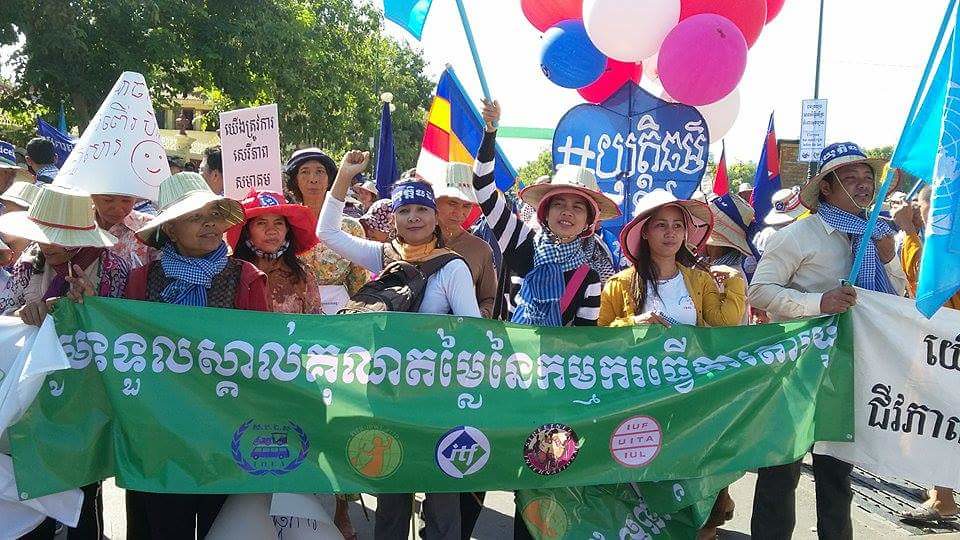
Domestic workers celebrate Human Rights Day, December 2015. Photo by Yim Soth on Flickr. (CC BY-NC-ND 2.0)
Despite its inclusion in many human rights instruments which have been translated into Khmer, the team were not able to find an “official” Khmer translation of “human dignity.” We found that in practice several phrases were used, including: sechaktei thlaithnaur chea mnous (dignity as human); sechaktei thlaithnaur robsa mnous (dignity of human); sechaktei thlaithnaur robsa bokkol mnous (dignity of human person); and sechaktei thlaithnaur knongnam chea mnous (dignity in the name of the human).
It was not evident to us that the phrases mean different things from one another, nor do they reveal how “human dignity” is being understood. What was more interesting for us was the way the underlying concept was being used and understood, as literal translations of “human dignity” may in practice vary considerably from the meaning conveyed in the translated language. We also found that “dignity” was paired with other concepts, such as the “dignity of citizens” protected by the Draft Public Order Law, the “dignity of the individual”, the “right to dignity”, and the dignity of specific individuals.
The most direct translations of the phrase ”human dignity” were found in the context of labour rights and living conditions. For example, human dignity was found to require adequate wages in Cambodia’s 1997 Labor Law and decent working conditions in its Criminal Code.
These links between human dignity and working conditions can be connected to the long-term advocacy presence of the International Labour Organisation in Cambodia, which has emphasised the importance of “dignified working conditions” for over 100 years. However, the link with human dignity was also evident in the work of local civil society groups, who advocate for better labour standards and dignified working conditions for specific groups, such as artists and women in the entertainment industry. In these contexts, dignity was related to minimum working conditions, as well as non-discrimination and freedom from violence.
Outside the context of labour rights, we found that references to the connections between “human rights and dignity” were often made in quite general terms. For example, the Royal Government of Cambodia has cited “promoting human rights and dignity” amongst its overarching goals in its last two National Strategic Development Plans. Similarly, the 2007 Civil Code asserts that the Code in its entirety gives concrete embodiment to “the dignity of the individual, the equality of the sexes and the guarantee of property rights” as contained within the Constitution.
More specific requirements were occasionally found, with the 1993 Constitution citing the “dignity of citizens” as requiring the prohibition of unlawful detention, torture and physical abuse of detainees, unlawful confessions and capital punishment. In this context, human dignity was understood as restricting the actions of the state. Such an interpretation was also evident in the work of human rights NGOs, who used the language of dignity to challenge restrictions on freedom of expression and the use of force against protestors.
While these examples suggest that human dignity is understood as something requiring a variety of rights protections, we also found situations where dignity was cited as a justification for limiting the rights of others.
This was most common in relation to freedom of expression. We noted in the introduction that the Draft Public Order Law explicitly cites the “dignity of citizens” among the justifications for introducing a range of restrictions on freedom of expression, and this was also evident elsewhere. For example, the 2021 Sub-Decree introduces restrictions on internet provision on the grounds of “safety, public order, dignity, culture, tradition and societal custom.” While these are recent examples, the use of dignity to inhibit freedom of expression is not new in Cambodia, nor is the connection between dignity and “societal customs”: Article 41 of the 1993 Constitution prohibits using freedom of expression “to impinge on the dignity of others, to affect the good moral and customs of society, public order and national security.” Dignity in this context is sometimes translated as “honour.”
On other occasions, the dignity of specific individuals has been used to limit others’ freedom of expression. For example, a 2018 amendment to the Cambodian Criminal Code (Article 435 bis) prohibits “speeches, gestures, writings, paintings or items that would affect the dignity of the King”—“dignity” here can also translate as either “reputation” or “fame”. This reflects Article 502 of the Criminal Code, which defines and prohibits “insults” which “undermine the dignity of a person.”
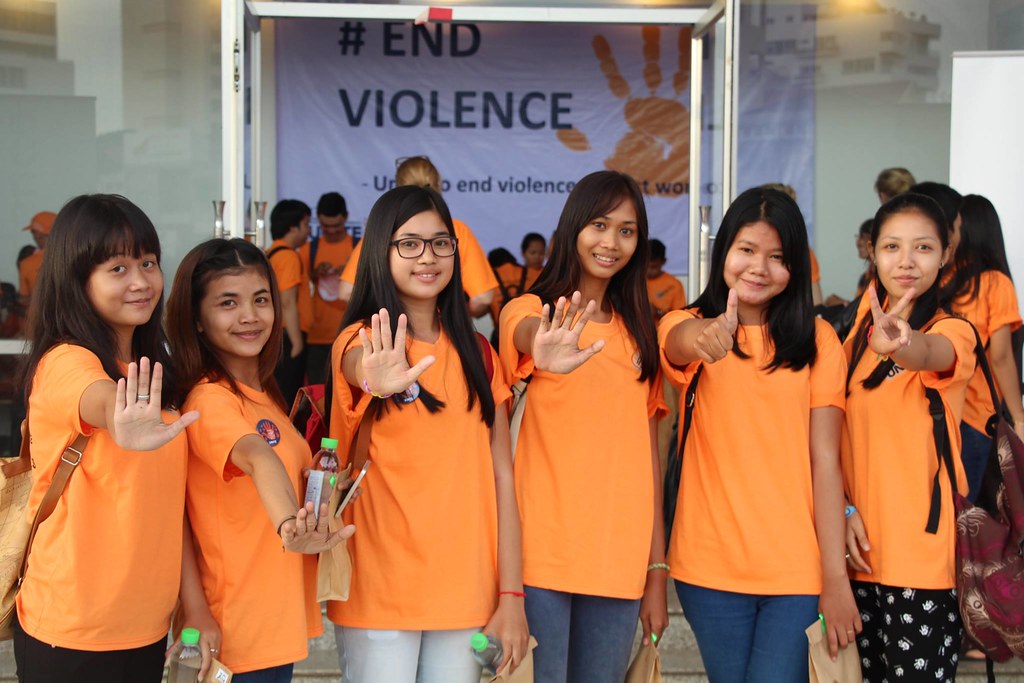
Young Cambodian women at a UN Women event discussing violence against women. Photo by Sara Hakansson on Flickr (CC BY-NC-ND 2.0)
Finally, and signalling the diverse meanings that human dignity can hold, we found some situations where human dignity was both a constraint and a protection. This was particularly common in relation to law and policies regarding the “dignity of women”. For example, prohibitions on human trafficking and sexual exploitation seek to protect the “dignity of women”, but also reference “Khmer values” and “social morality.” We found that civil society organisations would often highlight the blame women could face for their experiences, suggesting “the dignity of women” also carried certain expectations around appropriate behaviour.
Concluding Thoughts
What we have hoped to highlight by sharing these examples is that in Cambodia, as in other contexts, the concept of human dignity is packed with meanings which are context-dependent, which can overlap, and which can directly compete with one another. These meanings can in turn lead to diverse and contradictory outcomes, ranging from human rights protections and the promotion of adequate working and living conditions, to restrictions on rights and freedoms. Moreover, what is meant by “dignity” in Cambodian law and policy is not always clear, leading to fears of arbitrary interpretation and discrimination against already marginalised or politically vulnerable populations.
None of this is meant to suggest that human dignity lacks value as a foundational human rights concept. It is clear from our initial research that it does. However, it does suggest a need for greater caution before assuming the “universality” of such concepts, and for more discussions around the messy reality that often accompanies the translation of key human rights concepts into diverse contexts. Over the next few months, we will be analysing a series of interviews with Cambodian people from all walks of life in order to dig deeper into the meanings, uses, and values that are given to human dignity. In doing so, we hope our research can contribute to these discussions.
The article draws from the two-year research project titled, “Locating ‘Human Dignity’ in Cambodia”. This project is a collaboration between CSHL and Queen’s University Belfast and funded by the British Academy Humanities and Social Sciences Tackling Global Challenges Fund, grant number: TGC\200177. For further information contact the Principal Investigator at Rachel.killean@qub.ac.uk. You can access our research brief in English and Khmer and read more about the project here.
 Facebook
Facebook  Twitter
Twitter  Soundcloud
Soundcloud  Youtube
Youtube  Rss
Rss 